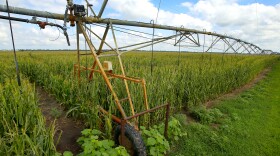When the USDA released its March Prospective Plantings report, some ag experts and grain markets were baffled by the large shift toward corn acres. The report listed a prospective 94 million acres of the crop nationwide. That’s a six percent increase over last year, and would add another 941 million bushels to an already well supplied market, according to agriculture.com.
So, what’s happening here?
On the High Plains the increased corn acres appear to have come from substantial reductions in wheat plantings. In Kansas, for example, wheat plantings will reduce this year by 700,000 acres. But soy prices have been holding steady while corn prices slumped, so why the switch to corn?
The relative yields of corn and soybeans can be quite variable. Higher corn to soybean yield ratios mean that other things being equal, corn would be more attractive in states like Iowa, Minnesota, North Dakota, and Kansas than in the Eastern Corn Belt.
As of April 1, the soybean to corn price ratio stands at 2.52. The USDA’s forecasting of a large shift to corn acres has pushed the price ratio toward making soybeans more attractive, and we may soon see a pendulum swing back toward soy acres.







